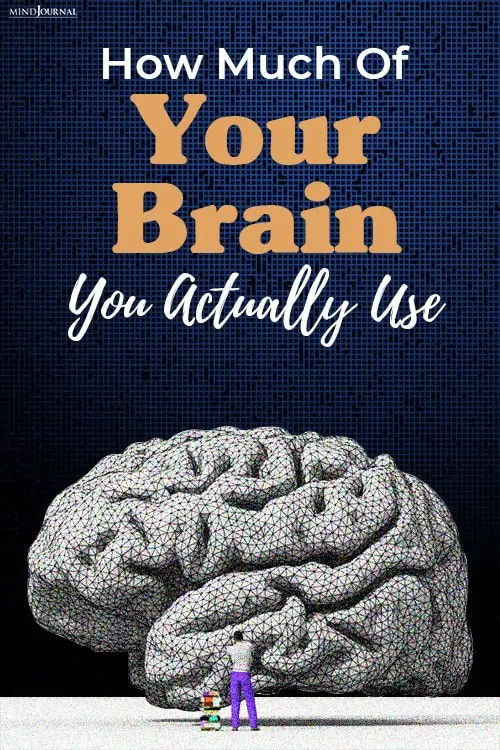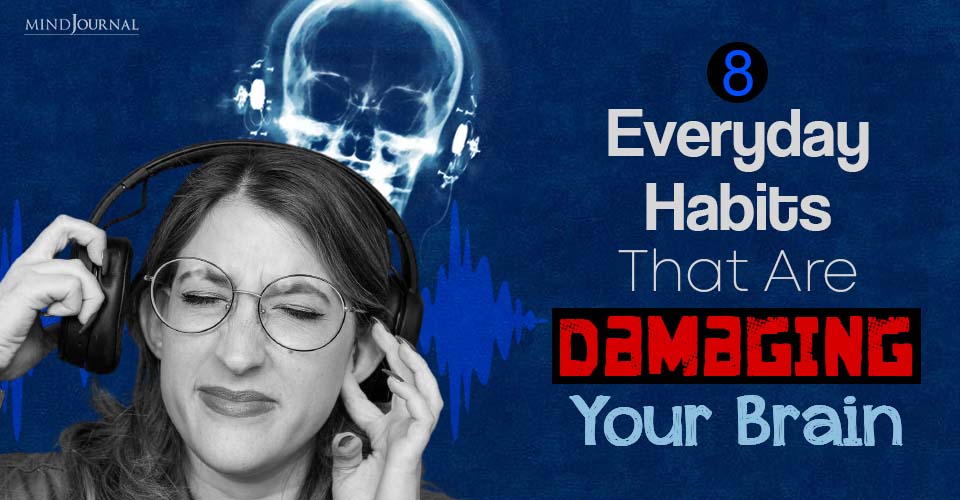The human brain is both intricate and mysterious, that’s why there are so many myths regarding its functions. Let us take a closer look at the capacity of the human brain, how you cannot use 100 percent of your brain, and why this is a good thing.
In Part 1 of a deep dive, we look at how much of your brain you actually use.
Key Points:
A popular claim that humans use just 10 percent of their brains is far from accurate—but that doesn't mean we use 100 percent of them, either.
Animal studies have found that more than 20 percent of neurons studied serve no identifiable purpose.
Some researchers have estimated that more than 60 percent of the brain consists of "neural dark matter," or neurons that have no apparent purpose and seem unresponsive to common stimuli.
“Animal life on earth goes back millions of years, yet most species only use three to five percent of their cerebral capacity.”—Professor Norman (Morgan Freeman) in the 2014 film Lucy
The film Lucy is famous—or maybe infamous—for advancing the idea that we humans use only a small fraction of our brain tissue. Through a variety of sci-fi inventions, the film’s namesake main character, played by Scarlett Johansson, is able to radically increase her brain usage from what it claims is a typical value under 10 percent ultimately up to 100 percent.
The “10 Percent Of The Brain Myth,” As It Is Called, Has A Long History.
And Lucy Director Luc Besson freely proclaims that his film is a fantasy based on little if any science.
The film certainly makes its own case that expanding activity beyond natural levels, let alone experiencing a 100 percent brain, comes with serious downsides, including what it portrays as increasingly ruthless behavior on the part of Johansson’s character. As we will see, there are good neuroscientific reasons to stick with our natural allotment of activity—and possibly to aim for less.
Yet many serious writers have used the film as a foil in order to debunk the 10 percent myth. They explain that, no, in fact, we use almost all of the brain, and we do so all the time. An eminent neurologist from Johns Hopkins School of Medicine was quoted in Scientific American as saying:
“We Use Virtually Every Part Of The Brain…[Most Of] The Brain Is Active Almost All The Time.”
Related: 5 Science Backed Ways To Improve Your Memory
The reality is that this claim is also inaccurate: I’ll call it the 100 percent myth. In fact, the 10 percent figure is a useful reference point for understanding how your brain works and for conceptualizing the actual patterns of activity happening in your head.
Now, it is probably true that, over time, we use more than just 10 percent of the neurons in our heads. However, the total is probably well short of 100 percent. The “probablies” here have to do with the fact that it is very difficult to make high-resolution measurements of activity in lots of neurons in an awake animal. Even non-human animals like mice are difficult to record, and in humans, the precise recording is nearly impossible.
Until recently, only a handful, a few dozen, or, more rarely, a few hundred or thousand neurons, could be measured at once with precision. However, neuroscientists are making significant progress.
In 2020, a large team led by Saskia de Vries of the Allen Institute for Brain Science published a blockbuster paper that made precise estimates of large-scale neural activity patterns in the mouse brain.
They measured activity across numerous areas of the cerebral cortex involved in vision and were able to record detailed activity in an astounding 60,000 neurons. As they recorded, the animals were able to run freely on a rotating disc. Animals were shown a variety of natural images and movies, giving a strong semblance of normal, active life for a mouse.
Related: The Three Parts Of The Mind: How It Affects Your Decisions And Your Life
It’s worth giving a little more detail about the methods of this study because they help illuminate a misleading argument in support of the 100 percent myth.
You might think that, in a brain of hundreds of millions or billions of neurons, 60,000 is still not a huge sample. In the mouse, it constitutes less than 0.1 percent of the brain—and mice are obviously a lot smaller and less sophisticated than us.
Why Not Use Brain Imaging Instead?
This gives us the attractive color images of whole brains “lighting up”—and it can be done in humans.
The issue is that brain imaging techniques like fMRI lack the necessary precision. They summarize activity over large numbers of neurons, and over comparatively long stretches of time.
In a typical fMRI experiment, each data point describing “activity” corresponds to the neural responses in a cube around 1 millimeter on a side. Each of the thousands of cubes that compose the brain contains hundreds of thousands or millions of neurons. The firing of these neurons is blurred together within each cube, and often further blurred by combining cubes comprising an anatomical brain region such as the amygdala.
Spiking is also summed up over the course of a second or so. This may seem like a short period but neurons operate much faster: on the millisecond scale. This means that they could fire hundreds of times in an almost endless variety of patterns, and all of this detail is invisible to the brain scanner.
Yet imaging data are often taken as evidence for the 100 percent myth: “Look!” it is argued, “almost every little cube is active, and the whole brain is ‘lighting up!’” Here again, we have a flawed argument.
Related: The 3 Methods Of Mastering The Mind
The reality is that the change in the activity of a given voxel—when it “lights up”—is quite small: it corresponds to a change in imaging signal of just a few percent at most. “Lighting up” can be caused by a relative handful of neurons inside a given voxel being highly active. This situation could, at a given moment, leave many if not most neurons quiescent and therefore result in much less than 100 percent activity. Nor can you tell if there are some neurons that never fire.
At the much finer-grained resolution achieved by the de Vries team, who used advanced invasive imaging techniques that require surgically exposing brain tissue, we can see what’s really going on. They found that almost a quarter—23 percent—of neurons in the visual brain didn’t respond to any visual stimuli. Stimuli included a diverse assortment of natural scenes from around the world as well as natural movies, including clips from the 1958 Orson Welles classic Touch of Evil. They also tried a wide variety of artificial images of alternating blobs and stripes.
It was all to no avail for the 23 percent—these neurons would spike every once in a while, but not in any systematic way. They didn’t care about motion, brightness, contrast, or seemingly anything else. If 23 percent of our own visual neurons don’t have an identifiable purpose, can we really say we “use” them?
It’s possible these quiet neurons would have responded to some special picture or movie that they weren’t shown. And despite being nominally “visual” neurons, some might respond to other types of stimuli such as a strong mouse-relevant odor or a loud sound. But as best as we can tell, almost a quarter of the neurons in this critical brain system are doing little if anything we can discern.
This pattern is by no means limited to the visual brain. A smaller but still impressive study recorded neurons in a part of the cortex responsible for hearing in rats. It found that only about 10 percent of neurons responded to sound stimuli. Again, the other neurons might respond to some odd sound that wasn’t presented, or to light falling on the eyes, touch on the skin, or something else.
Related: 15 Common Cognitive Distortions That Twist Your Thinking
But the magnitude of unresponsive neurons suggests that some substantial fraction of neurons is mostly quiet. Neuroscientists have known about this problem for a long time but until recently, it was standard practice to not scrutinize or, in many cases, mention “unresponsive” neurons in recording studies.
Others have made very high estimates of the number of quiet or silent neurons. Neurobiologist Saak Ovsepian used previous reports to estimate that the fraction of what has come to be called “neural dark matter” could be as high as 60 to 90 percent.
The high end of this estimate aligns nicely with the 10 percent notion explored in Lucy.
Why would the brain have so many useless neurons? Isn’t this wasteful? Evolutionary biologists have devised an explanation for the phenomenon of neural dark matter on Darwinian grounds. The idea is that, over the course of generations, neurons that never respond are no longer subject to selective forces that would otherwise penalize owners of excess neurons. Following this logic, dark neurons can’t be disposed of. Dark neurons might be called upon if the brain is damaged. They could also come in handy over the course of evolution as species enter new habitats or face new challenges.
It’s worth emphasizing that even a very high estimate of the amount of dark matter doesn’t suppose that quiet neurons are bunched together, representing large chunks of terra incognita in your head. Instead, they are interspersed with “bright” or loud neurons throughout the cerebral cortex and in other parts of the brain.
Related: The 3 Types Of Human Minds, According To Psychology – What’s Yours?
Regardless of how they are distributed, there is certainly more than a smidge of dark matter in our brains. I think that given the metabolic cost of building and running a brain—especially one of our size—our brains couldn’t exist with more than half of their neurons never being active. After all, the de Vries study showed that 77 percent of the visual neurons they measured were doing something that seems useful.
However, these neurons weren’t responding all the time, or even nearly all the time. Their responses were instead sparse. In Part 2 of this post, I will consider the idea of sparseness and what it means for the question of how much of our brain we use. I’ll also show how this question is illuminated by conceiving our brains as operating in similar ways as the internet.
References
- de Vries, S. E., Lecoq, J. A., Buice, M. A., Groblewski, P. A., Ocker, G. K., Oliver, M., … & Koch, C. (2020). A large-scale standardized physiological survey reveals functional organization of the mouse visual cortex. Nature Neuroscience, 23(1), 138-151.
- Fried, I., Rutishauser, U., Cerf, M., & Kreiman, G. (Eds.). (2014). Single neuron studies of the human brain: probing cognition. MIT Press.
- Hromádka, T., DeWeese, M. R., & Zador, A. M. (2008). Sparse representation of sounds in the unanesthetized auditory cortex. PLoS Biology, 6(1), e16.
- Ovsepian, S. V. (2019). The dark matter of the brain. Brain Structure and Function, 224(3), 973-983.
- Kavanau, J. L. (1990). Conservative behavioural evolution, the neural substrate. Animal Behaviour, 39(4), 758-767.
Written by: Daniel Graham, Ph.D., the author of An Internet in Your Head: A New Paradigm for How the Brain Works
Originally appeared on: Psychology Today
Republished with permission










Leave a Reply
You must be logged in to post a comment.